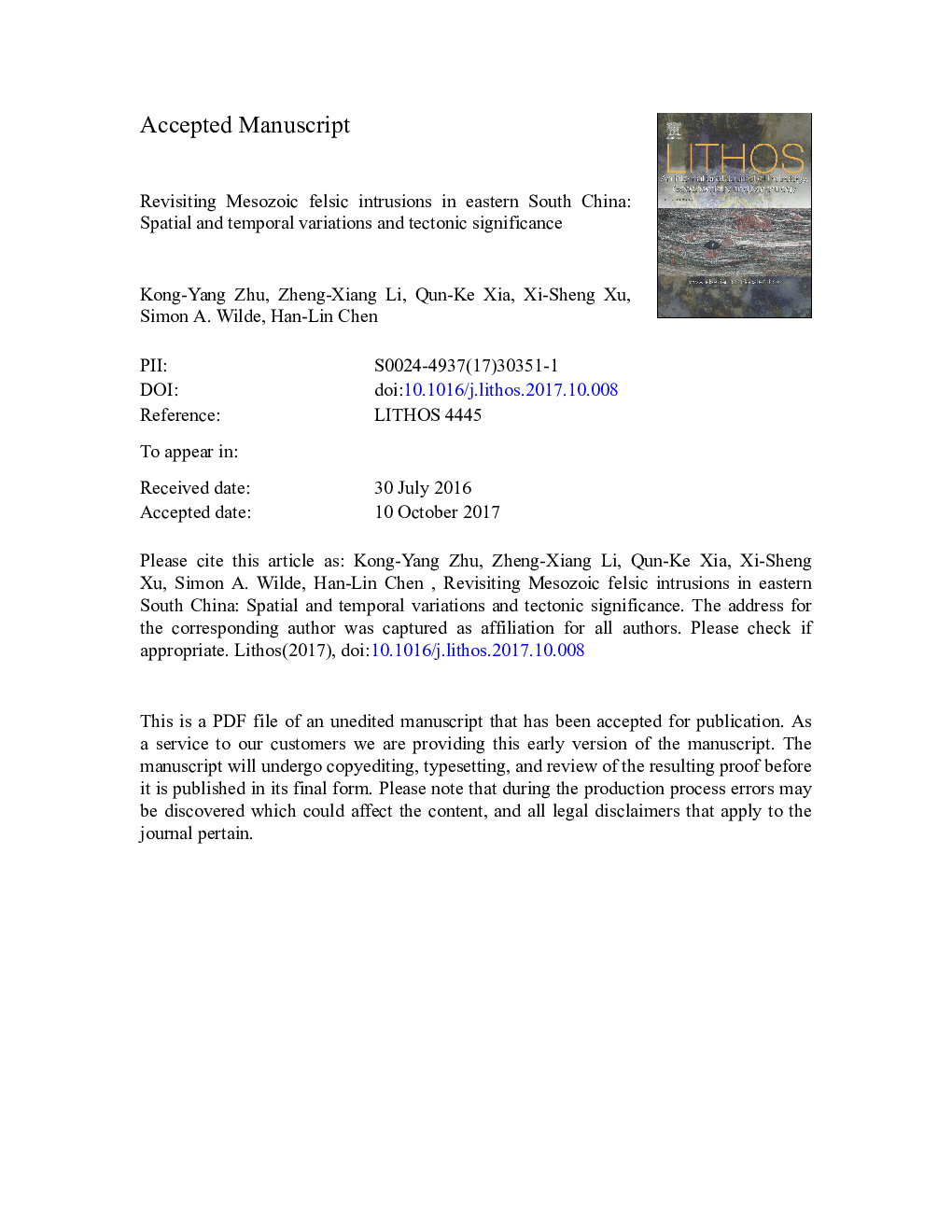| Article ID | Journal | Published Year | Pages | File Type |
|---|---|---|---|---|
| 8911852 | Lithos | 2017 | 68 Pages |
Abstract
Whole-rock and mineral geochemical data are used to place new constraints on the petrogenesis and tectonic setting of Mesozoic granitoids (including syenites) in eastern South China. In the Early Mesozoic, granitoids of variable compositions were intruded in the Cathaysia Block which by this time had developed a thickened and highly differentiated Paleoproterozoic crust through the influence of subduction. Late Triassic (~Â 225Â Ma) syenites are significantly different from Jurassic-Cretaceous syenites in South China and from most trachytes (GEOROC database) in terms of their high Th/U, La/Nb and Gd/Yb ratios. Their low Rb contents, coupled with their high K/Rb and Nb/Ta, and low 87Sr/86Sr and 206Pb/204Pb ratios suggest a source that had undergone granulite-facies metamorphism at the base of thickened (>Â 45Â km thick) continental crust where garnet and rutile are stable. The Late Triassic alkaline intrusions thus appear not to be related to continental rifting. Compared with the Late Triassic syenites, contemporaneous syenogranites have higher Ga/Al and Rb/K ratios and ISr values. Their Ga/Al ratios are positively correlated with ISr values, and their higher Ga/Al ratios likewise do not appear to be related to a rift setting but reflect the composition of the source. New Pb isotopic data from Cretaceous magmatic rocks reveal that 120-100Â Ma I-type granitoids in Zhejiang Province were likely derived from mixing of three components: contemporaneous basaltic magma, an enriched crustal component and a depleted crustal component. Pb isotopes of both the I-type granitoids and the basalts become more radiogenic towards the coast, where the ca. 100Â Ma intrusions dominate. Furthermore, zircon-melt partition of Ce and hornblende oxygen barometries indicate that the Early Cretaceous intrusions also became more oxidized towards the coast. In addition, the ca. 100Â Ma granitoids have higher Gd/Yb and lower Fe/Mg ratios than those of the 120-110Â Ma suite, implying crustal thickening resulting from 120 to 100Â Ma basaltic underplating in the region.
Related Topics
Physical Sciences and Engineering
Earth and Planetary Sciences
Geochemistry and Petrology
Authors
Kong-Yang Zhu, Zheng-Xiang Li, Qun-Ke Xia, Xi-Sheng Xu, Simon A. Wilde, Han-Lin Chen,
